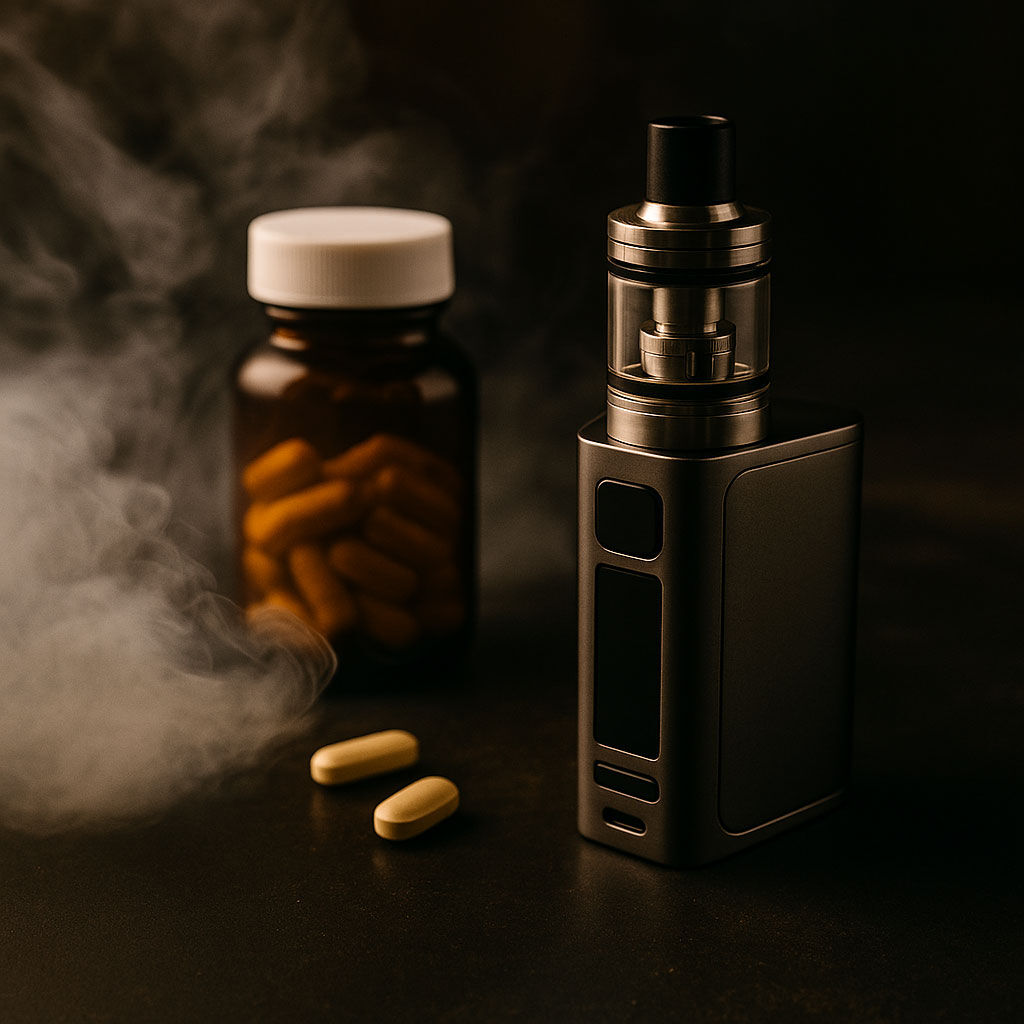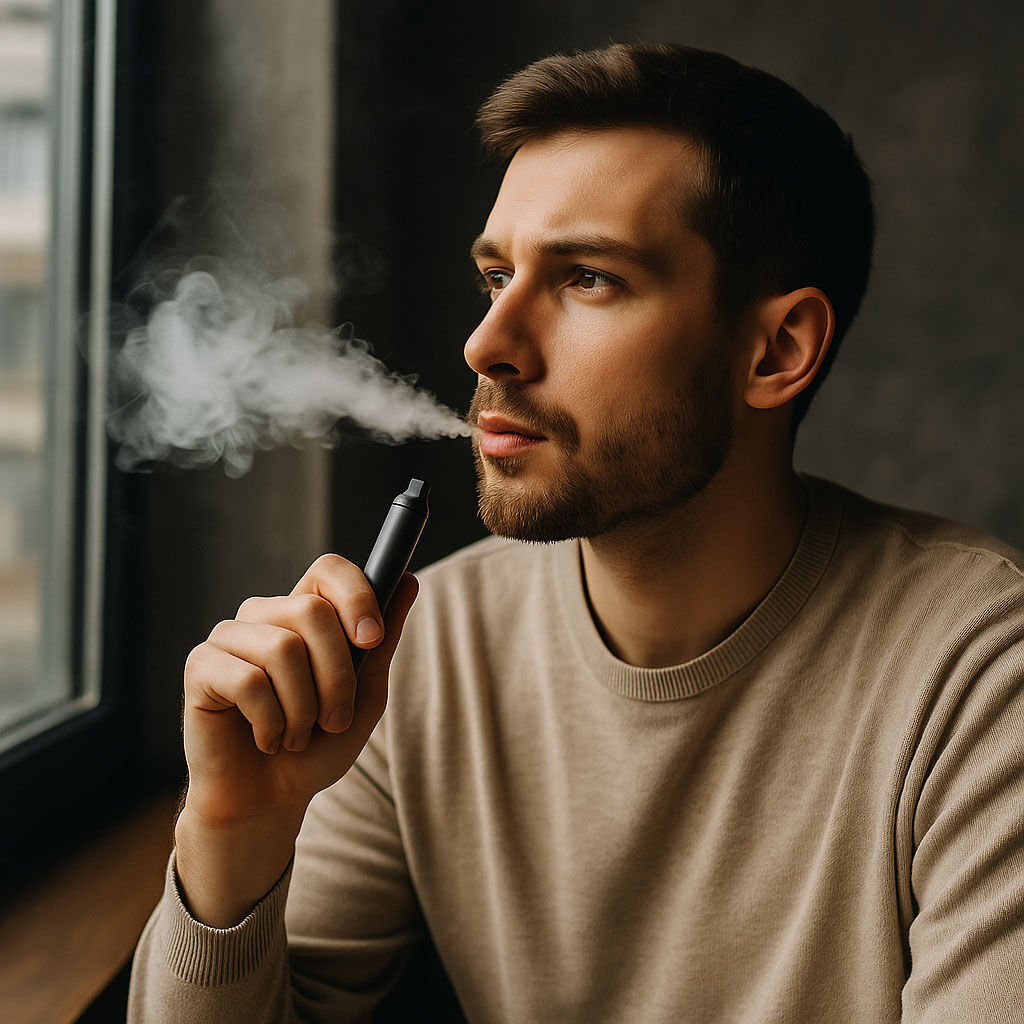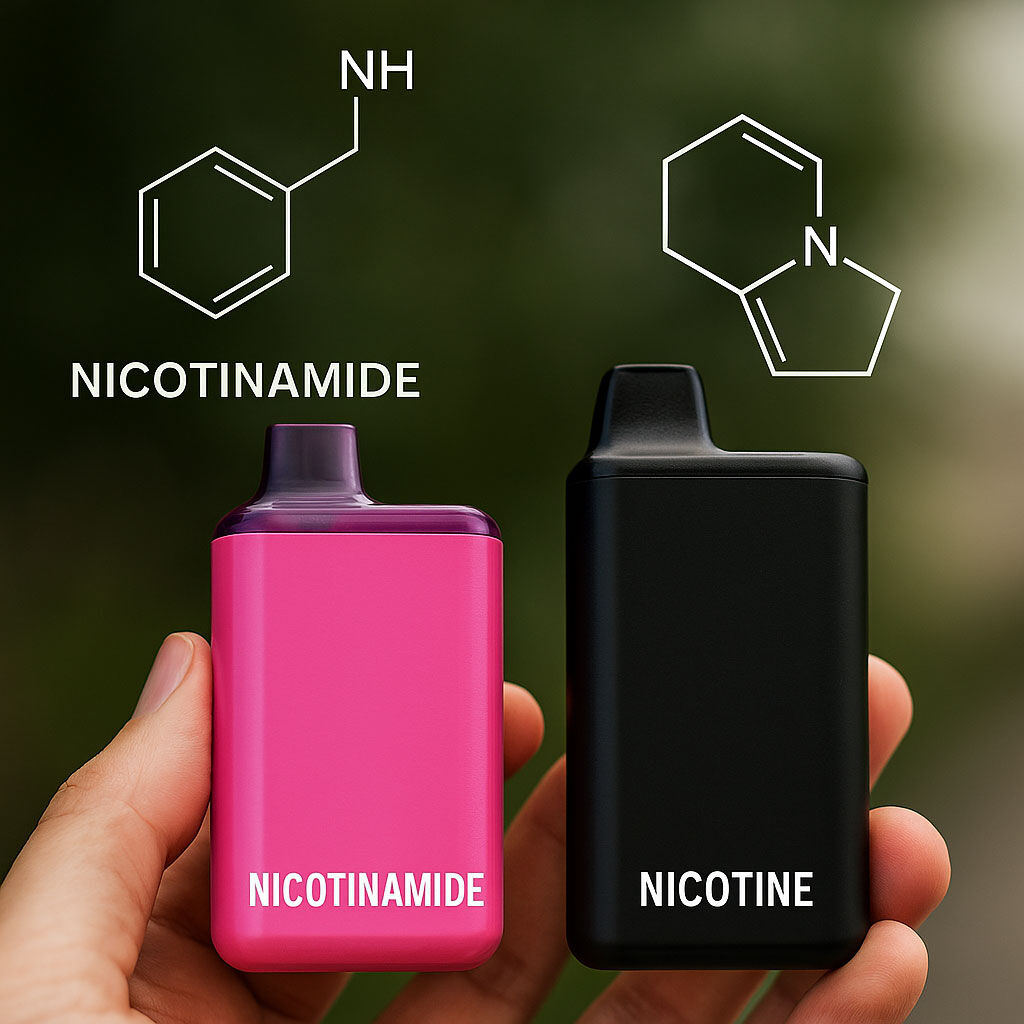Nixamide vape research has been brought up recently among vapers who are weaning off of nicotine. On social media and in early lab discussions, nixamide is being called a “nicotine alternative,” offering the same ritual without the chemical dependency. But where did this compound come from, and does it actually work the way it’s promoted? Researchers are starting to test nixamide, exploring the effects on the body, and questioning whether marketing claims are actually factual.
For vapers looking to make informed, mindful choices about what goes into their devices, understanding the science behind nixamide is a crucial part of that journey.
The Birth of the Idea: From Vitamin to Vapor
Nixamide is rooted in nicotinamide (a form of vitamin B3). In food and supplements, nicotinamide has a long safety history. When companies began marketing it as part of vape liquids, they described it as delivering “pleasure, satisfaction, and enjoyment” through a compound structurally different from nicotine. A 2024 review titled Marketing of nicotinamide as nicotine replacement discusses how nixamide is positioned as a kind of nicotine-free substitute—but also flags how little human inhalation data exist (pmc.ncbi.nlm.nih.gov).
The idea took hold because it promised the same calming ritual without dependence—a way to quit without giving up the experience. But as more scientists examine the chemistry, the distinction between perception and proof is becoming clearer.

What Is Nixamide, Really?
Before diving deeper into current nixamide vape research, it helps to understand what this compound actually is—and what it isn’t. Nixamide is often marketed as a “nicotine alternative,” but its origins are less mysterious than they sound. It’s derived from nicotinamide, a form of vitamin B3 that’s already well-known in nutrition and skincare science. The difference is how it’s being repurposed. When inhaled, nicotinamide’s behavior in the body may not mirror nicotine’s, which is where much of the current research and debate begins.
For readers looking to explore this background in more depth, What Is Nixamide: A Straight-Talk Guide to a New Nicotine Alternative breaks down how nixamide came to market, the chemistry behind it, and why it’s generating attention among vapers searching for non-nicotine options.
Understanding its foundation makes it easier to see why so many studies are focused not only on its chemical safety but also on whether it can truly deliver nicotine-like satisfaction without addiction.
What the Lab Tests Reveal (and Hide)
Mismatch Between Labels and Contents
A 2024 JAMA study tested e-liquid and disposable products marketed with nicotinamide, nixotine, nixodine, and nixamide labels. They found “substantial discrepancies” in what was on the label versus what was inside. Many products labeled as nicotinamide also contained traces of 6-methyl nicotine (a nicotine analog), often undeclared (jamanetwork.com).
In effect, some nixamide-labeled products are blends or contain analog compounds, which muddies the claim of being a pure “nicotine alternative.”
Unknown Toxicology, Speculative Pathways
A recent scoping review on emerging nicotine analogs (6-methyl nicotine and nicotinamide) highlights that safety profiles are largely unknown. The authors speculate possible modes of airway damage via oxidative stress, receptor activation, or inflammatory pathways, but emphasize these are hypotheses, not confirmed effects (researchgate.net).
This uncertainty has sparked comparisons between nicotine’s well-documented neural effects and the unknowns of nixamide. Nicotine’s influence on mood and focus is already well studied, as explored in Does Nicotine Cause Anxiety or Help It?—a resource that helps explain how nicotine interacts with brain chemistry and why many users feel both stimulation and calm. Nixamide, by contrast, hasn’t shown consistent evidence of interacting with those same receptors, leaving its psychological impact unproven.
Other research warns that some e-cigarette chemicals mimic nicotine and may bypass regulation altogether. In some tested devices, ingredient claims didn’t match content, and toxicologists note that “nicotine analogs are currently not subject to the FDA process and have not been studied for their health effects” (eurekalert.org).

Why Researchers and Regulators Are Raising Alarms
When a compound is marketed to deliver nicotine-like effects but escapes regulation, concerns multiply. A coalition of health and tobacco control organizations sent a letter to the FDA urging scrutiny of nicotine analog products, including nixamide, warning that they may be designed to evade oversight (lung.org).
Because analogs are structurally different, some manufacturers claim their products are exempt from tobacco regulation—yet the actual effects, addiction potential, and degradation byproducts remain opaque. For consumers, that means taking an informed approach is essential to staying safe and making conscious choices about what’s being inhaled.
How the Market and R&D Are Responding
Major players in the vaping industry are quietly exploring analogs and hybrid formulations. The push is toward chemicals that mimic nicotine’s binding properties but skirt regulation. That means nixamide is not alone—it’s part of a broader shift.
Still, companies acknowledge that complete inhalation safety testing will take years. Meanwhile, consumers, suppliers, and regulators are watching closely. For those navigating this new space, awareness is the best protection—knowing what’s inside a vape and how it’s represented helps each user make healthier, more informed decisions.
A Thoughtful Approach for Vapers Tracking Nicotine Alternatives
If you’re exploring nixamide or other nicotine alternatives, treat this as an evolving experiment—not a proven path. Here’s how to stay grounded:
-
Demand transparency. Prefer products with third-party lab results or certificates of analysis that disclose all contents, including analogs.
-
Taper with care. If you aim to reduce nicotine dependence, drop levels gradually rather than switching abruptly to analogs.
-
Start low. If testing nixamide products, begin with minimal concentrations and monitor any physical or psychological effects (e.g., jitteriness, mood shifts).
-
Track regulation trends. Laws may evolve quickly—what’s legal now might face limits later.
-
Keep alternative options in view. For vapers already exploring zero-nicotine, The Truth About Vaping Without Nicotine offers context on what those transitions actually feel like, including the mental and physical adjustments that come with dropping nicotine entirely.
Whether your goal is to quit nicotine or understand what’s new in the market, taking a research-first approach helps protect both your health and your progress. Articles like What Is Nixamide: A Straight-Talk Guide to a New Nicotine Alternative and Does Nicotine Cause Anxiety or Help It? expand this conversation, offering a clearer picture of how these compounds shape behavior, mood, and satisfaction in everyday use.
What “Nixamide Vape Research” Suggests About the Future of Nicotine Alternatives
After months of lab testing and debate, nixamide vape research continues to reveal more questions than answers. What began as a bold idea—to turn a form of vitamin B3 into a satisfying vape ingredient—has opened a new chapter in the conversation about what a nicotine alternative can be.
The early data suggest that nixamide may not behave like nicotine, but it's still shaping how people think about harm reduction.
Studies confirm that some products labeled as nixamide contain nicotine analogs or inconsistent formulations, reminding researchers and consumers that regulation and transparency still lag behind innovation. Yet, that same uncertainty is what drives exploration forward. Each new study adds to a growing body of evidence that’s redefining what “nicotine-free” might mean in vaping culture.
If future research proves nixamide can create satisfaction without dependence, it could become a landmark step toward a safer nicotine alternative. Until then, the science invites curiosity—and caution. Understanding these findings helps vapers make informed choices as the industry continues to evolve toward options that feel familiar but support healthier habits.
At Ruthless Vapor, we believe knowledge drives better choices. Staying informed, questioning new ingredients, and putting your well-being first are what make harm reduction real—not just possible.




Leave a comment
All comments are moderated before being published.
This site is protected by hCaptcha and the hCaptcha Privacy Policy and Terms of Service apply.